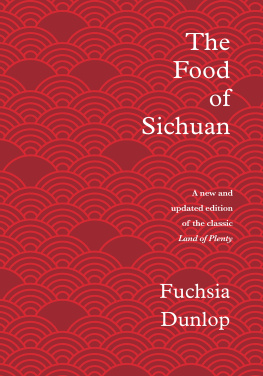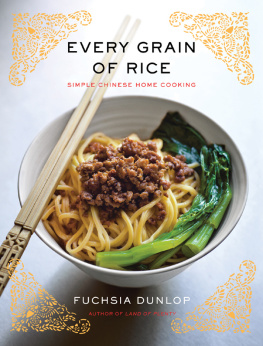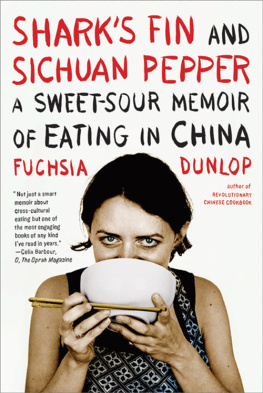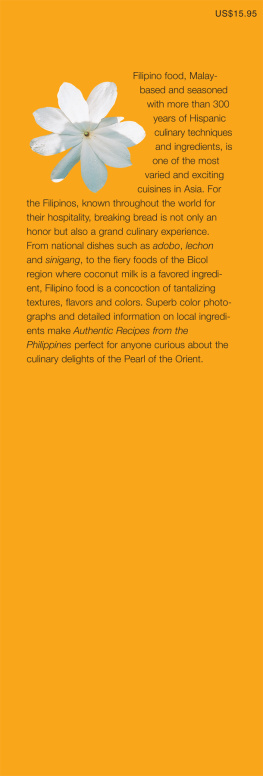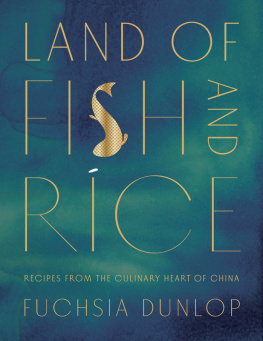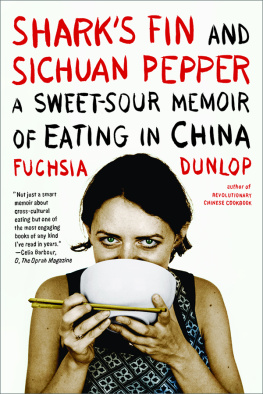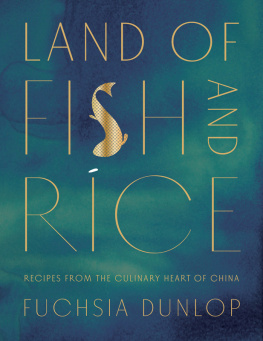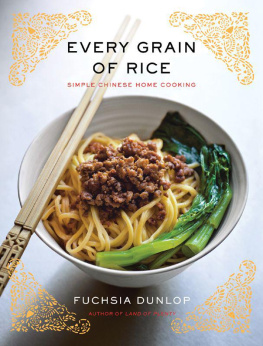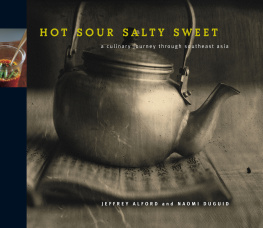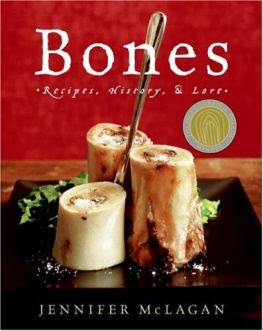Contents
Guide


I never raise my chopsticks
without remembering my dear Sichuan

Lu You
Song-dynasty poet, 11251209

The
Food
of
Sichuan
Photography by Yuki Sugiura
with additional location photography
by Ian Cumming
Fuchsia
Dunlop

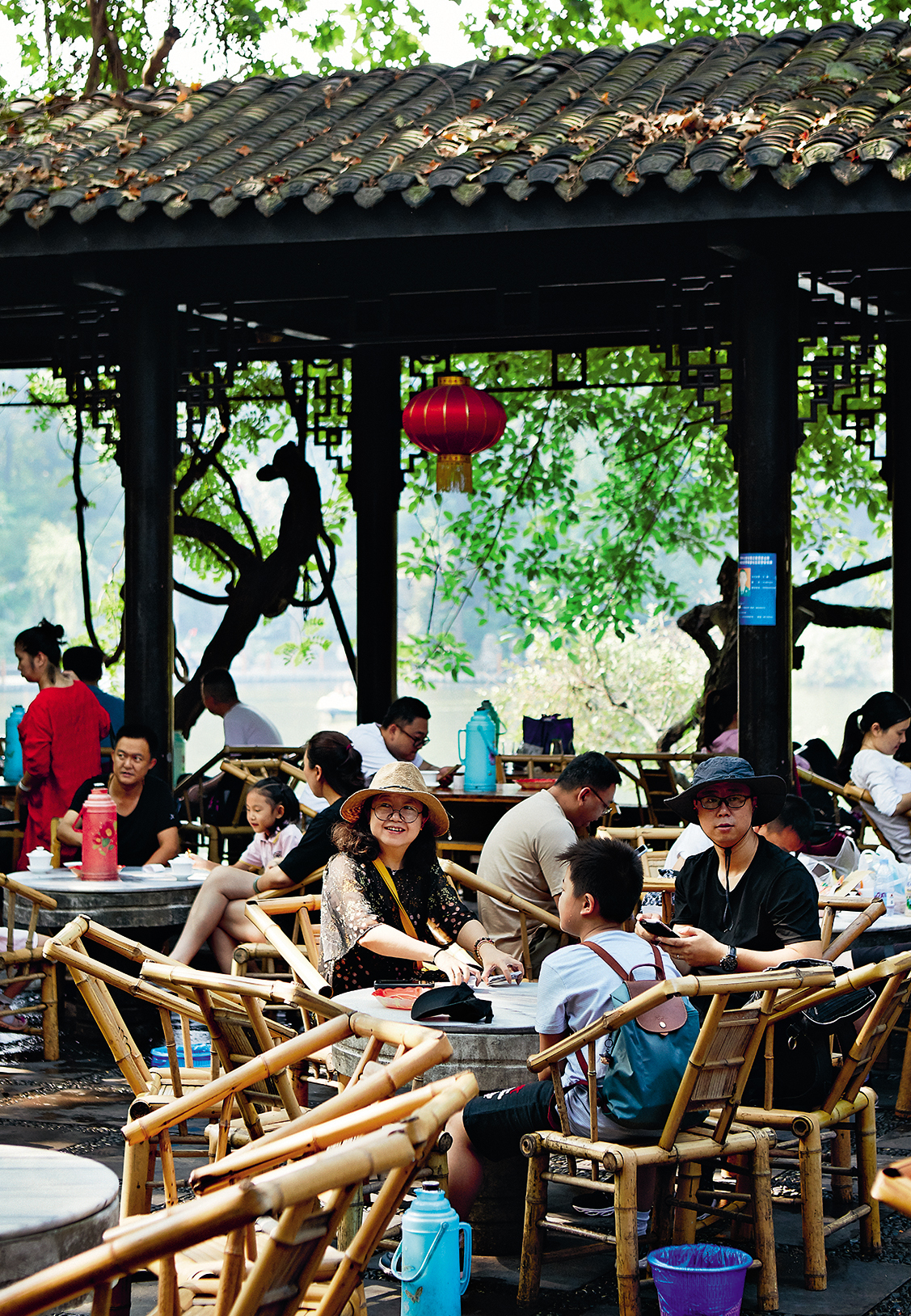
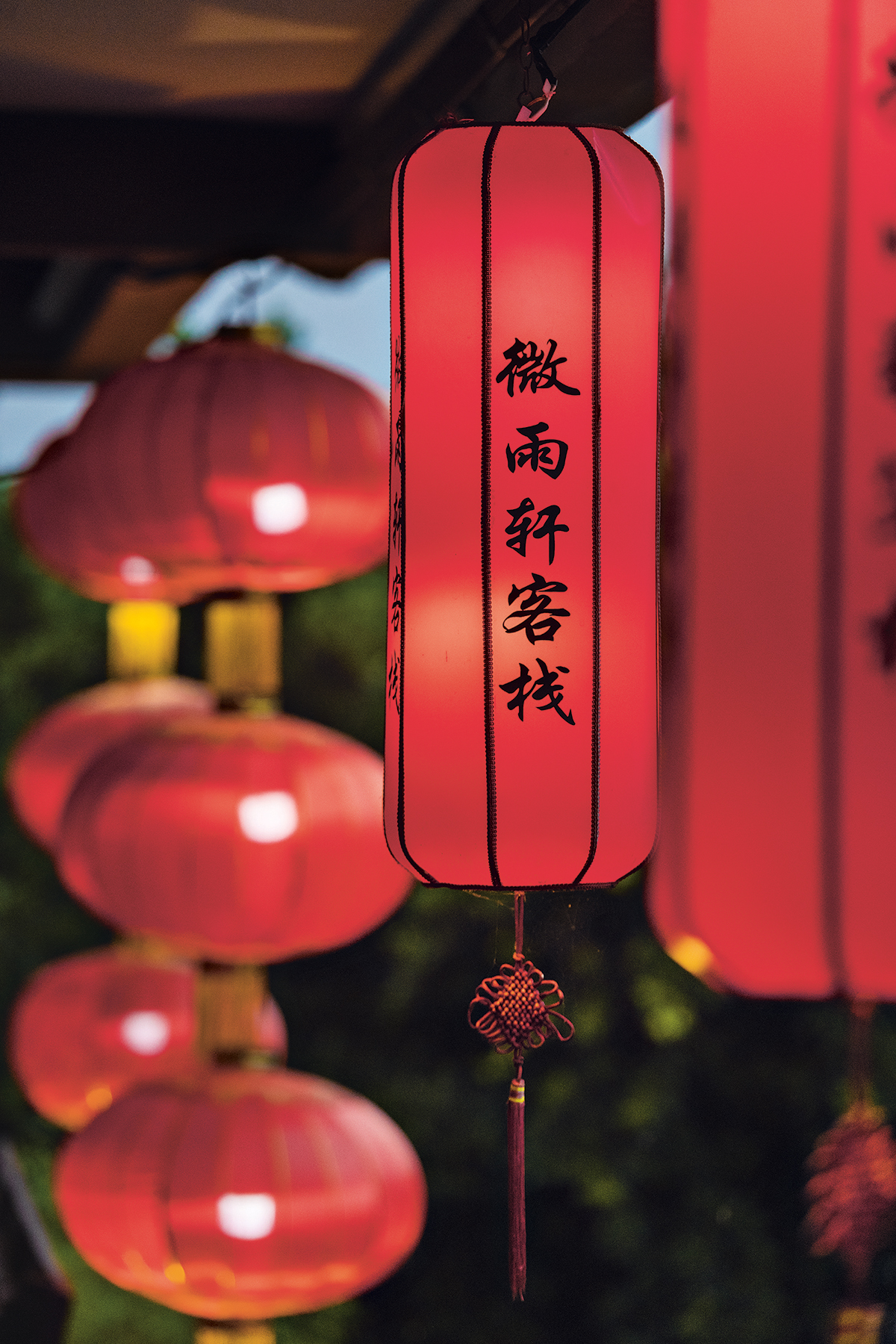
When the first edition of this book was published in 2001, Sichuanese cuisine was renowned across China but little known abroad. In Britain, there were no genuine Sichuanese restaurants, and authentic seasonings were impossible to find. Even among chefs and food experts, few outside China had experienced the lip-tingling sensation of real Sichuan pepper. Two pioneering cookbooks, Robert Delfs The Good Food of Szechwan and Ellen Schreckers Mrs. Chiangs Szechwan Cookbook , had introduced the flavors of Sichuan to American readers but Chinese food, as understood in the Western world, was still dominated by the Cantonese style.
Much has changed in the intervening years. A craze for Sichuanese food began to sweep China in the late 1990s, and has since spread beyond the countrys borders. Sichuanese restaurants have sprung up in Western cities, mapo tofu is now a favorite dish of discerning international eaters, and Sichuan pepper is tingling its way across the world. Sichuanese ingredients are increasingly available, and the region itself is becoming popular as a food destination. In 2010 UNESCO named the Sichuanese capital, Chengdu, as its first Asian City of Gastronomy. Finally, Sichuanese cuisine is receiving some of the global attention it so richly deserves.
I was privileged to be living in Sichuan during a period of dramatic social change in the 1990s, when for the first time it became possible for a foreigner to conduct detailed gastronomic research on the ground. In 1994, after two years of studying the Chinese language part-time, I moved to Chengdu to take up a British Council Scholarship at Sichuan University. I must admit that my choice of university was heavily influenced by the reputation of the local cuisine: on two previous trips to the region I had been bowled over by the complex flavors and warm colors of the food, and I knew I wanted to find out more about it.
When Id been in Chengdu for a couple of months, sampling the street snacks and folk cuisine, and wandering through the vibrant local markets, Ialong with a German friend, Volkerdecided to make inquiries about cooking classes. One sunny October afternoon we cycled across the city in search of the famous provincial cooking school. We could hear from the street that we had arrived. Fast, regular chopping, the sound of cleavers on wood. Upstairs, in a plain white room, dozens of apprentice cooks in white overalls were engrossed in learning the art of sauces. Chiles and ginger were being pulverized with pairs of cleavers on tree-trunk chopping boards, Sichuan pepper was being ground to a fine brown powder, and the students were scurrying around mixing oils and spices, fine-tuning the flavors of the rich, dark liquids in their crucibles. The air hummed with a gentle rhythmic pounding, and the clinking of china spoons in china bowls. On long parallel tables sat bowls of soy sauce and oil, and piles of sugar and salt. Notebooks scribbled with Chinese characters lay open amid the blood-red chiles and scattered peppercorns. The light streamed in through open windows. We agreed immediately that this was where we had to study.
Over the next two months, Volker and I took private classes at the Sichuan Institute of Higher Cuisine. Our teacher was the brilliant Gan Guojian, and the schools English tutor, Professor Feng Quanxin, was on hand to help us decipher the Sichuanese dialect and explain unfamiliar culinary terms. With this foundation, a growing fluency in the Chinese language and a small repertoire of classic Sichuanese dishes, I was able to talk to chefs and restaurateurs, and to spend study days in several local restaurants.
Some months later, when I had finished my course at Sichuan University and was thinking about returning home to England, I dropped in at the cooking school. To my surprise, the principal invited me to enroll as a regular student on a professional training course: a particular privilege, since no foreigner had ever done this before. I leapt at the opportunity, promptly enrolled and paid my modest fees, and was issued with chefs whites and a Chinese cleaver.
Every day for the next three months, I studied cooking with forty-five Sichuanese young men and two young women. Mornings were spent in the classroom, covering culinary theorythe selection of raw ingredients, mixing of flavors, control of heat and different cooking methodsand then we would all move over to the demonstration room. There, we would watch our teachers, Long Qingrong and L Maoguo, prepare folk dishes and banquet delicacies with ease and artistry. In the afternoons, it was our turn to cook. In teams of ten we would prepare our ingredients, killing and cleaning fish, washing and chopping vegetables, collecting dried spices and pickled chiles from the nearby storeroom. Then each of us would have a turn at the wok, our classmates gathering round to tease and criticize. The finished dishes were all presented to the teacher, who would assess them for color, taste and texture. On my days off I would cycle through Chengdu, learning about street food and researching ingredients. I was also lucky enough to study in some of the citys restaurant kitchens, including traditional snack specialist the Dragon Wonton and the magical Shufeng Garden.
Ever since that period of delicious initiation, I have continued to explore the byways of Sichuan province, researching regional dishes and local culinary traditions. Nearly twenty years after the publication of the first edition, I felt it was time to revise this book, to try to satisfy the growing appetite for information about Sichuanese cuisine in the English-speaking world in the light of my own now-expanded knowledge, and to reflect the evolution of Sichuanese cuisine itself over this period.
Writing a cookbook that attempts to encapsulate the cuisine of a place is like pitching a tent on quicksand. Any living culinary culture is a moving target, constantly evolving and responding to new influences and encounters. Dishes that I knew and loved in Chengdu in the mid-1990s have all but disappeared, while new ingredients and cooking methods have seeded themselves on local menus; fresh culinary crazes sweep the city often. Even the province itself is radically altered since I first lived there, having in 1997 shed the vast metropolis of Chongqing, Chengdus old rival, which has become a separate municipality, taking with it approximately 30 million of Sichuans population (in culinary terms, however, Chongqing can still be considered to be part of Sichuan).

